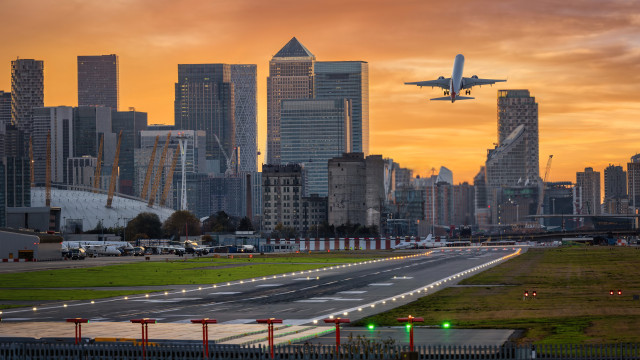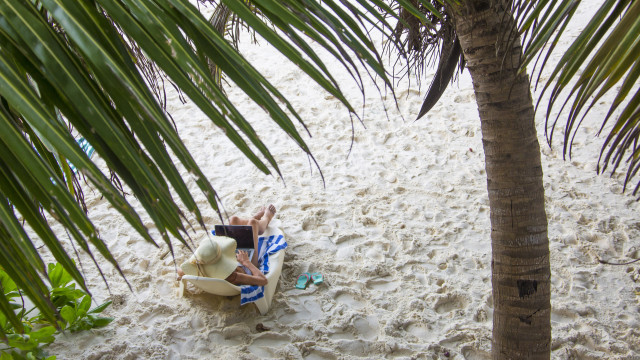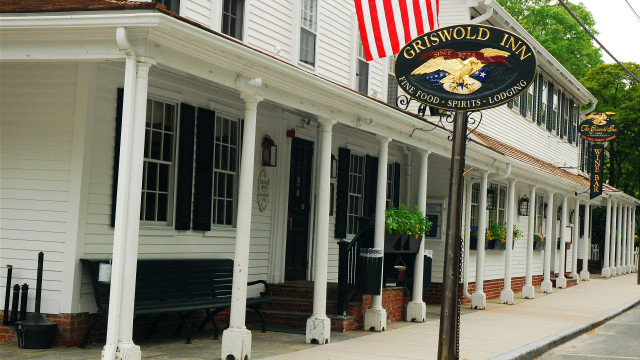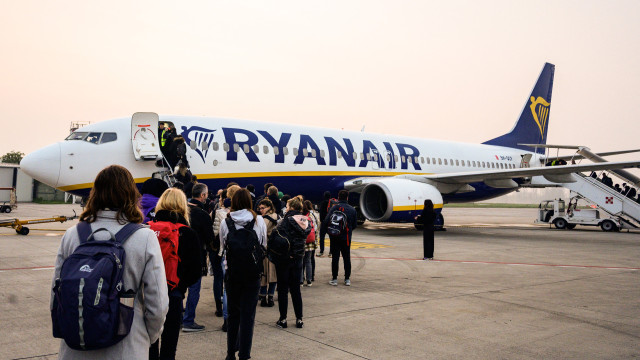






























See Also
See Again
© Getty Images
0 / 31 Fotos
Harsh and desolate
- Not for nothing is the Skeleton Coast named as such. In the 15th century, Portuguese navigators under Diogo Cão referred to the land as the "Gates of Hell." The bushmen of the Namibian interior still call the region the "land God made in anger."
© Getty Images
1 / 31 Fotos
Hostile and forbidding
- Hostile and forbidding, the Skeleton Coast has claimed many lives, including those of hapless humans, likely shipwrecked and attempting to survive in the hot, dry conditions.
© Shutterstock
2 / 31 Fotos
A thriving wilderness
- Yet life does thrive in this uncompromising wilderness. You just have to know where to look.
© Shutterstock
3 / 31 Fotos
Skeleton Coast National Park
- Established in 1971, Skeleton Coast National Park is one of the most desolate nature reserves on the African continent. But it's where a select variety of wildlife thrives. Set within the park is the Cape Cross Seal Reserve, home to one of the largest colonies of Cape fur seals on the planet.
© Shutterstock
4 / 31 Fotos
Desert lion
- The desert lions of the Namib desert are a critically endangered subspecies of the iconic big cat. Able to go long periods of time without water, these lions are now very rare and if you managed to see one during your Skeleton Coast experience, consider yourself especially privileged.
© Getty Images
5 / 31 Fotos
Black rhinoceros
- The critically endangered black rhinoceros maintains a tenuous foothold in the park. Sightings of this magnificent beast are rare but if you're lucky enough to spot one, the experience is truly memorable.
© Shutterstock
6 / 31 Fotos
Desert elephant
- Desert-adapted elephants, known as desert elephants, can be found along Namibia's Skeleton Coast. This striding bull elephant is pictured in a remote area near Purros, about 55 km (34 mi) inland from the coast.
© Shutterstock
7 / 31 Fotos
South African oryx
- The South African oryx, also known as the gemsbok, is Namibia's national animal. The species is more prevalent in the region's other great conservation area, Etosha National Park, in the northwestern interior of the country.
© Shutterstock
8 / 31 Fotos
Namaqua chameleon
- The parched Namib desert is home to the Namaqua chameleon. It's one of the largest chameleon species in southern Africa.
© Shutterstock
9 / 31 Fotos
Web-footed gecko
- The extraordinary web-footed gecko is totally at home in the harsh Skeleton Coast environment. Its color provides perfect camouflage among the powdery reddish sands of the Namib desert, their primary habitat.
© Shutterstock
10 / 31 Fotos
Springbok
- The springbok is the national animal of South Africa, though its distribution also covers Namibia and western Botswana.
© Shutterstock
11 / 31 Fotos
Brown hyena
- Occasional sightings have been made along the Skeleton Coast of the near-threatened brown hyena. You're more likely to meet this species in the Etosha National Park.
© Shutterstock
12 / 31 Fotos
Black-backed jackal
- It's not uncommon to bump into this guy, a black-backed jackal, while exploring the coast. The medium sized canine with its long, black stripe extending along the flanks, often scavenges right up to the shoreline.
© Shutterstock
13 / 31 Fotos
Heaviside's dolphin
- It's always worth looking out into the sea for a glimpse of the rare Heaviside's dolphin. The small, near-threatened cetacean is endemic to the Benguela ecosystem along the southwest coast of Africa.
© Shutterstock
14 / 31 Fotos
Greater kudu
- Recognized for its magnificent spiral horns, the greater kudu is another animal more at home in the Etosha National Park rather than along the exposed Skeleton Coast.
© Shutterstock
15 / 31 Fotos
Lesser flamingo
- Flocks of lesser flamingo frequent the Skeleton Coast region, gathering to breed in the saltpans of Etosha towards the end of the rainy season when the pans are full of water. They are also often seen on the coast, particularly in the Walvis Bay lagoon and at the Swakopmund Salt Works on the Diamond Coast, in southwestern Namibia.
© Shutterstock
16 / 31 Fotos
Skeleton Coast shipwrecks
- The dense ocean fogs that shroud the Skeleton Coast for much of the year have claimed numerous vessels over the centuries. The Bom Jesus, a Portuguese nau that set sail from Lisbon in 1533 laden with gold and ivory, is the oldest known and most valuable shipwreck ever discovered off the coast of Sub-Saharan Africa. Its remains were only discovered in 2008 on the coast near Oranjemund.
© Getty Images
17 / 31 Fotos
Eduard Bohlen
- Arguably the Skeleton Coast's most modern-day shipwreck is that of the cargo ship Eduard Bohlen, which sunk on September 5, 1909 in thick fog. Over the years, desert sands have reclaimed the vessel and it now lies 400 m (1,300 ft) from the shoreline.
© Shutterstock
18 / 31 Fotos
MV Dunedin Star
- The Bohlen is near two other well-known wrecks. The MV Dunedin Star (pictured) was a UK-registered refrigerated cargo liner that was lost on the notorious Clan Alpine Shoal reef in November 1942. The book 'Skeleton Coast' by John Henry Marsh, published in 1944, recalls the rescue operation after the ship had floundered. Image: Robert Raderschatt
© Public Domain
19 / 31 Fotos
Otavi
- A similar fate befell the Otavi (pictured), a steamer that ran aground in Spencer Bay in 1945.
© Shutterstock
20 / 31 Fotos
Zeila
- More recently, the Zeila was beached near Henties Bay on August 25, 2008. Skeleton Coast shipwrecks are now visitor attractions in their own right, and are included in the itineraries of most local tour operations.
© Shutterstock
21 / 31 Fotos
Abandoned oil rig
- It's not only ocean-going vessels that have been claimed by the elements. A popular landmark is the abandoned oil drilling rig near Toscanini that was operational during the late 1960s and early '70s. Today the corroded industrial behemoth provides an ideal nesting site for a variety of birdlife during the breeding season.
© Shutterstock
22 / 31 Fotos
Strandloper peoples
- Few have chosen to live along the inhospitable Skeleton Coast. The Strandloper peoples, however, called this remote and arid destination home for centuries. But demographic and economic changes in the 19th century forced their disappearance through assimilation. Image: Rijksmuseum, Netherlands
© Public Domain
23 / 31 Fotos
Swakopmund
- The nearest city to the Skeleton Coast is Swakopmund, Namibia. This beach resort is distinguished for its German colonial architecture and plethora of sightseeing tour operations.
© Shutterstock
24 / 31 Fotos
Hollywood comes to town
- Swakopmund is a hardly a place you'd expect Hollywood royalty to visit, but in May 2006 the town greeted Brad Pitt and Angelina Jolie, who were married at that time, as they announced the birth of daughter Shiloh Nouvel Jolie-Pitt. The former couple were in the country to support a Namibian private wildlife sanctuary.
© Getty Images
25 / 31 Fotos
Driving the Skeleton Coast
- Swakopmund is where to base yourself if you intend to explore the Skeleton Coast. The C34 highway arrows north to hug the coast all the way to the Skeleton Coast National Park. It's always best to opt for a guided safari drive rather than attempt to sightsee independently.
© Shutterstock
26 / 31 Fotos
Flightseeing
- An alternative method of taking in the region is by flightseeing. Swakopmund is served by its own airport.
© Shutterstock
27 / 31 Fotos
Ugab River
- The Skeleton Coast is nourished in part by the Ugab River. The river only flows above the surface of its sandy bed a few days each year, but when it does the freshwater lures an abundance of wildlife, including rare desert elephants and the vulnerable Hartmann's mountain zebra.
© Shutterstock
28 / 31 Fotos
Kaokoveld Desert
- The Kaokoveld is a harsh coastal desert of drifting sand dunes and rocky mountains located in northern Namibia. It extends beyond the northern reaches of the Skeleton Coast and should only be explored under expert outdoor guidance. If you do make it here, you'll likely be rewarded with sightings of the rare black rhino, among other endangered species.
© Getty Images
29 / 31 Fotos
The OvaHimba
- The indigenous OvaHimba people have their home in the Kaokoveld. They also inhabit the other side of the Kunene River in southern Angola. They are considered the last (semi-) nomadic people of Namibia. Sources: (Famous Explorers) (The Guardian) (National Geographic) (AP News) See also: Everyday things you didn't know were invented by indigenous peoples
© Shutterstock
30 / 31 Fotos
© Getty Images
0 / 31 Fotos
Harsh and desolate
- Not for nothing is the Skeleton Coast named as such. In the 15th century, Portuguese navigators under Diogo Cão referred to the land as the "Gates of Hell." The bushmen of the Namibian interior still call the region the "land God made in anger."
© Getty Images
1 / 31 Fotos
Hostile and forbidding
- Hostile and forbidding, the Skeleton Coast has claimed many lives, including those of hapless humans, likely shipwrecked and attempting to survive in the hot, dry conditions.
© Shutterstock
2 / 31 Fotos
A thriving wilderness
- Yet life does thrive in this uncompromising wilderness. You just have to know where to look.
© Shutterstock
3 / 31 Fotos
Skeleton Coast National Park
- Established in 1971, Skeleton Coast National Park is one of the most desolate nature reserves on the African continent. But it's where a select variety of wildlife thrives. Set within the park is the Cape Cross Seal Reserve, home to one of the largest colonies of Cape fur seals on the planet.
© Shutterstock
4 / 31 Fotos
Desert lion
- The desert lions of the Namib desert are a critically endangered subspecies of the iconic big cat. Able to go long periods of time without water, these lions are now very rare and if you managed to see one during your Skeleton Coast experience, consider yourself especially privileged.
© Getty Images
5 / 31 Fotos
Black rhinoceros
- The critically endangered black rhinoceros maintains a tenuous foothold in the park. Sightings of this magnificent beast are rare but if you're lucky enough to spot one, the experience is truly memorable.
© Shutterstock
6 / 31 Fotos
Desert elephant
- Desert-adapted elephants, known as desert elephants, can be found along Namibia's Skeleton Coast. This striding bull elephant is pictured in a remote area near Purros, about 55 km (34 mi) inland from the coast.
© Shutterstock
7 / 31 Fotos
South African oryx
- The South African oryx, also known as the gemsbok, is Namibia's national animal. The species is more prevalent in the region's other great conservation area, Etosha National Park, in the northwestern interior of the country.
© Shutterstock
8 / 31 Fotos
Namaqua chameleon
- The parched Namib desert is home to the Namaqua chameleon. It's one of the largest chameleon species in southern Africa.
© Shutterstock
9 / 31 Fotos
Web-footed gecko
- The extraordinary web-footed gecko is totally at home in the harsh Skeleton Coast environment. Its color provides perfect camouflage among the powdery reddish sands of the Namib desert, their primary habitat.
© Shutterstock
10 / 31 Fotos
Springbok
- The springbok is the national animal of South Africa, though its distribution also covers Namibia and western Botswana.
© Shutterstock
11 / 31 Fotos
Brown hyena
- Occasional sightings have been made along the Skeleton Coast of the near-threatened brown hyena. You're more likely to meet this species in the Etosha National Park.
© Shutterstock
12 / 31 Fotos
Black-backed jackal
- It's not uncommon to bump into this guy, a black-backed jackal, while exploring the coast. The medium sized canine with its long, black stripe extending along the flanks, often scavenges right up to the shoreline.
© Shutterstock
13 / 31 Fotos
Heaviside's dolphin
- It's always worth looking out into the sea for a glimpse of the rare Heaviside's dolphin. The small, near-threatened cetacean is endemic to the Benguela ecosystem along the southwest coast of Africa.
© Shutterstock
14 / 31 Fotos
Greater kudu
- Recognized for its magnificent spiral horns, the greater kudu is another animal more at home in the Etosha National Park rather than along the exposed Skeleton Coast.
© Shutterstock
15 / 31 Fotos
Lesser flamingo
- Flocks of lesser flamingo frequent the Skeleton Coast region, gathering to breed in the saltpans of Etosha towards the end of the rainy season when the pans are full of water. They are also often seen on the coast, particularly in the Walvis Bay lagoon and at the Swakopmund Salt Works on the Diamond Coast, in southwestern Namibia.
© Shutterstock
16 / 31 Fotos
Skeleton Coast shipwrecks
- The dense ocean fogs that shroud the Skeleton Coast for much of the year have claimed numerous vessels over the centuries. The Bom Jesus, a Portuguese nau that set sail from Lisbon in 1533 laden with gold and ivory, is the oldest known and most valuable shipwreck ever discovered off the coast of Sub-Saharan Africa. Its remains were only discovered in 2008 on the coast near Oranjemund.
© Getty Images
17 / 31 Fotos
Eduard Bohlen
- Arguably the Skeleton Coast's most modern-day shipwreck is that of the cargo ship Eduard Bohlen, which sunk on September 5, 1909 in thick fog. Over the years, desert sands have reclaimed the vessel and it now lies 400 m (1,300 ft) from the shoreline.
© Shutterstock
18 / 31 Fotos
MV Dunedin Star
- The Bohlen is near two other well-known wrecks. The MV Dunedin Star (pictured) was a UK-registered refrigerated cargo liner that was lost on the notorious Clan Alpine Shoal reef in November 1942. The book 'Skeleton Coast' by John Henry Marsh, published in 1944, recalls the rescue operation after the ship had floundered. Image: Robert Raderschatt
© Public Domain
19 / 31 Fotos
Otavi
- A similar fate befell the Otavi (pictured), a steamer that ran aground in Spencer Bay in 1945.
© Shutterstock
20 / 31 Fotos
Zeila
- More recently, the Zeila was beached near Henties Bay on August 25, 2008. Skeleton Coast shipwrecks are now visitor attractions in their own right, and are included in the itineraries of most local tour operations.
© Shutterstock
21 / 31 Fotos
Abandoned oil rig
- It's not only ocean-going vessels that have been claimed by the elements. A popular landmark is the abandoned oil drilling rig near Toscanini that was operational during the late 1960s and early '70s. Today the corroded industrial behemoth provides an ideal nesting site for a variety of birdlife during the breeding season.
© Shutterstock
22 / 31 Fotos
Strandloper peoples
- Few have chosen to live along the inhospitable Skeleton Coast. The Strandloper peoples, however, called this remote and arid destination home for centuries. But demographic and economic changes in the 19th century forced their disappearance through assimilation. Image: Rijksmuseum, Netherlands
© Public Domain
23 / 31 Fotos
Swakopmund
- The nearest city to the Skeleton Coast is Swakopmund, Namibia. This beach resort is distinguished for its German colonial architecture and plethora of sightseeing tour operations.
© Shutterstock
24 / 31 Fotos
Hollywood comes to town
- Swakopmund is a hardly a place you'd expect Hollywood royalty to visit, but in May 2006 the town greeted Brad Pitt and Angelina Jolie, who were married at that time, as they announced the birth of daughter Shiloh Nouvel Jolie-Pitt. The former couple were in the country to support a Namibian private wildlife sanctuary.
© Getty Images
25 / 31 Fotos
Driving the Skeleton Coast
- Swakopmund is where to base yourself if you intend to explore the Skeleton Coast. The C34 highway arrows north to hug the coast all the way to the Skeleton Coast National Park. It's always best to opt for a guided safari drive rather than attempt to sightsee independently.
© Shutterstock
26 / 31 Fotos
Flightseeing
- An alternative method of taking in the region is by flightseeing. Swakopmund is served by its own airport.
© Shutterstock
27 / 31 Fotos
Ugab River
- The Skeleton Coast is nourished in part by the Ugab River. The river only flows above the surface of its sandy bed a few days each year, but when it does the freshwater lures an abundance of wildlife, including rare desert elephants and the vulnerable Hartmann's mountain zebra.
© Shutterstock
28 / 31 Fotos
Kaokoveld Desert
- The Kaokoveld is a harsh coastal desert of drifting sand dunes and rocky mountains located in northern Namibia. It extends beyond the northern reaches of the Skeleton Coast and should only be explored under expert outdoor guidance. If you do make it here, you'll likely be rewarded with sightings of the rare black rhino, among other endangered species.
© Getty Images
29 / 31 Fotos
The OvaHimba
- The indigenous OvaHimba people have their home in the Kaokoveld. They also inhabit the other side of the Kunene River in southern Angola. They are considered the last (semi-) nomadic people of Namibia. Sources: (Famous Explorers) (The Guardian) (National Geographic) (AP News) See also: Everyday things you didn't know were invented by indigenous peoples
© Shutterstock
30 / 31 Fotos
The unique landscape of Namibia's Skeleton Coast
Are you ready to discover one the most desolate places in Africa?
© Getty Images
The Skeleton Coast fringes the northern part of the Atlantic coast of Namibia, and also edges its way into southern Angola. It's one of the world's most inhospitable places, a hot, arid and remote region that on the surface has no appeal whatsoever. But don't be fooled. This is a compelling destination teeming with rare and exotic wildlife. It also exudes an exciting air of mystery, home as it is to numerous shipwrecks, many of which lie scattered on the sand as testimony to one of Africa's most treacherous stretches of coastline.
Click through and discover this wonderfully desolate destination.
RECOMMENDED FOR YOU

















MOST READ
- Last Hour
- Last Day
- Last Week








